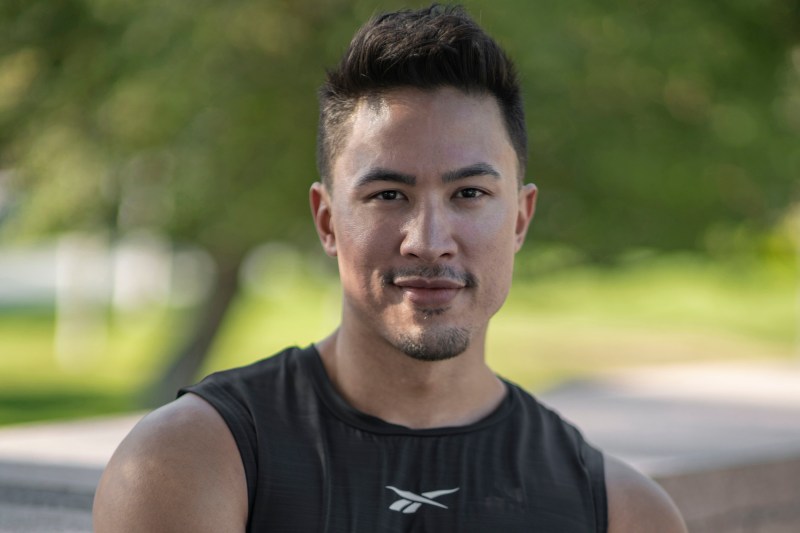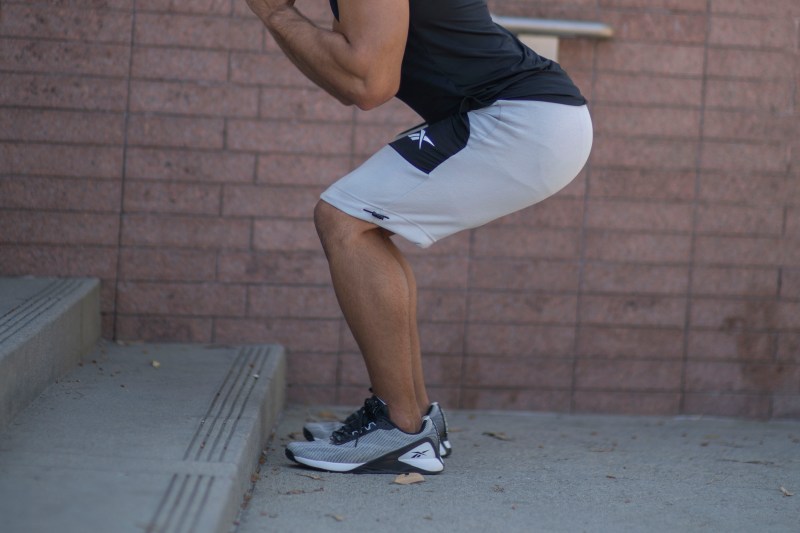
Kenta Seki may be the number one “Fine-as-Hell Asian Man,” according to what HuffPost once said, but the Los Angeles-based trainer emphasizes that when it comes to your calves, it’s about more than good looks. “That’s something that I’m trying to get away from,” the former Reebok-sponsored athlete said. Rather than the old bodybuilding philosophy of how to pack on more separation and mass to your lower legs, he counters with a different set of queries: “How do they function, how do they feel, and how do they work for you? Those should be the bigger questions.”
If this sounds vaguely familiar, it’s because it all ties into the trend of functional fitness, or training for action rather than aesthetic, which has swept across the industry over the last decade or so. Even Seki, who’s been involved with training since the age of 16, admits to having to get his brain around the concept. But now that he’s there, he said the philosophy can benefit everyone from the elite athlete improving performance to the everyman just looking to shed a few pounds. “I love that it’s becoming about, OK, let’s start that narrative, and let’s start focusing on function.”
How do you know if your calves are in sorry shape and in need of a boot camp and calf workouts? Chronic pain can be a big indicator, but overall endurance, which can be evaluated via the repetition of bodyweight exercises like standing calf raises or by activities like running or jumping rope, will tell you pretty quickly with a rising burn and eventual stop. Seki assembled a list of bodyweight movements to improve strength and function. And don’t forget stretching: “[Calves] might be overworking but not adequately stretching,” he said. “It’s about improving that range of motion over time.” Keep reading to learn about the best calf workouts to add to your routine.

Standing double calf raises
One of the most basic calf exercises is still one of the best. Failed your recent evaluation? Start here. Awesome for isolating the soleus muscle, it only works if you keep your knees straight.
Targeted muscles: Calves
Equipment needed: A small stair set
Sets: 3
Execution:
- Hang your heels off a stair
- Hold on to a railing with one hand for balance if necessary
- Slowly raise both heels, contracting at the top of the movement and pausing briefly
- Lower controlled to the bottom of the movement, feeling the stretch and pausing briefly
- Repeat for 15 reps
- Rest as needed between sets

Squat calf raises
When your knees are bent, you more effectively isolate the gastrocnemius muscles. Adding this to straight calf raises ensures the full development of the lower leg.
Targeted muscles: Calves
Equipment needed: A small stair set
Sets: 3
Execution:
- Lower into a half-squat with heels hanging off a stair
- Hold on to a railing with one hand for balance if necessary
- Slowly raise, contracting at the top of the movement and pausing briefly
- Lower controlled to the bottom of the movement, feeling the stretch and pausing briefly
- Repeat for 15 reps
- Rest as needed between sets

Standing single-leg calf raises
One is the loneliest number, revealing each calf’s hidden weaknesses. This is great for isolating and correcting asymmetrical issues, while also benefiting balance and stability.
Targeted muscles: Calves
Equipment needed: A small stair set
Sets: 3
Execution:
- Hang a single heel off a stair, the unweighted foot tucked behind the working calf
- Hold on to a railing with one hand for balance if necessary
- Slowly raise the heel, contracting at the top of the movement and pausing briefly
- Lower controlled to the bottom of the movement, feeling the stretch and pausing briefly
- Repeat for 15 reps
- Switch legs and repeat steps one through five
- Rest as needed between sets

Donkey calf raises
Only jackasses don’t work their calves. So get to it with this combo strength-and-stretch exercise. Bonus: Improving the range of motion can potentially stimulate more growth.
Targeted muscles: Calves
Equipment needed: A small stair set
Sets: 3
Execution:
- Hang your heels off a stair
- On the stair immediately in front, place your palms flat while hinging your hips back
- Slowly raise both heels, contracting at the top of the movement and pausing briefly
- Lower controlled to the bottom of the movement, feeling the stretch and pausing briefly
- Repeat for 15 reps
- Rest as needed between sets

Box jumps
This training staple builds power and explosiveness — and, as a result, some highly functional lower legs. Seki said that this specific exercise activates both slow- and fast-twitch muscle fibers for well-rounded growth.
Targeted muscles: Calves, lower body
Equipment needed: A box or ledge
Sets: 3
Execution:
- Start with feet shoulder-width apart
- Hinge hips back
- Spring up to the box, landing flat-footed in a crouch
- Stand to full height
- Step one foot down, then the other
- Repeat for 15 reps
- Rest as necessary between sets

Downward-facing dog
As Seki emphasized, expanding the range of motion ensures that muscles are not only working but working efficiently. This yoga staple can be done just about anywhere and yet will continue to pay dividends over time and with repetition.
Targeted muscles: Calves
Equipment needed: None
Sets: 3
Execution:
- Place both palms flat on the floor
- Pull your hips up while pressing your heels to the floor
- Add a slight bend to the knees if the heels don’t touch with the knees straight
- Hold for 30 to 45 seconds
- Repeat
- Rest as necessary between sets

Standing calf stretch
Targeted muscles: Calves
Equipment needed: None
Sets: 3
Execution:
- Lean forward slightly and work on pressing your back heel down to the ground. Play with turning your back toes in and out slightly, to stretch your calf from different angles.
- In a split stance, bend the front knee while keeping the back knee straight
- Lower until you feel a stretch in the calf
- For added stretch, push the rear heel into the ground
- Alternate the angle of the stretching leg to hit different parts of the calf
- Hold for 30 to 45 seconds
- Switch legs and repeat
- Rest as needed between sets

What is functional training?
We quickly described functional training above, but let’s get into more detail. Functional training is a type of exercise that focuses on mimicking and improving the movements you use in everyday life. It’s not about isolating individual muscles, but instead, about training your body to move as a whole unit, just like you do when you bend over to pick up something, climb stairs, or play with your kids.
The benefits of functional training include improved balance and coordination, reduced risk of injury, increased strength and endurance, improved performance in sports and activities, and weight loss and management.



